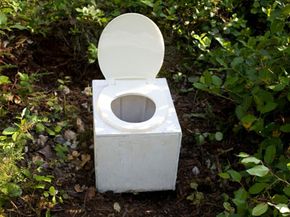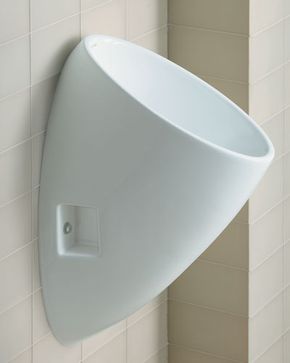You should research your toilet before buying it. "Step one is to call the local health department," says Tom Bruursema, general manager of the wastewater treatment unit at the National Sanitation Foundation. Ask whether the toilet you're eyeing meets safety and sanitation standards and whether your planned method of disposing of urine and compost is legal. They'll approve your system based on factors specific to your house, your family, and where you live. The health department can fine you or restrict your use if you install a toilet that's not compliant, says Bruursema.
Beyond trouble with officials, poorly made systems carry risks. The more your system exposes you to untreated or improperly treated human waste, whether during use, cleaning or emptying, the higher your risk for getting sick, says Bruursema. A poorly made system can expose you to pathogenic bacteria, viruses, protozoa and parasitic worms.
If you're wondering about maintenance, it depends on the setup. Composting toilets generally require more work than incinerating toilets or waterless urinals. Basic care is throwing in dry, carbon-rich cover after each use and monitoring the compost. You have to add cover if it's soupy or water if it's too dry.
If you're worried about odors, many commercial toilets build in methods for preventing bathroom stench. For instance, Envirolet toilets use fans to pull air from your bathroom through the toilet and out of a stack on your roof. You seal gaps in the system with silicone [source: Envirolet]. The fans in the toilet aerate the compost and keep the air flowing one-way.
But according to "The Humanure Handbook," written by Joseph Jenkins, who claims to have 30 years of human waste composting experience, all you need to extinguish stench is healthy compost. To achieve that, you must:
- Keep the compost moist (like a wrung-out sponge).
- Throw in sawdust or a carbonaceous alternative after each use.
- Aerate the compost using one of many methods.
- Maintain the right temperature.
- Maintain the right carbon-to-nitrogen ratio.
If oxygen is smothered, or if liquid or nitrogen build up, that's when things get stinky. But if it's done right, the finished compost will smell like soil.
Waterless toilets must be cleaned like regular toilets. There's no magic here -- just use warm, soapy water to clean the toilet bowl. Some toilets have removable bowls.
Of course, your cleaning does not stop at the toilet bowl. You need to empty the toilet. If it's a composting toilet, emptying times range from months to years, depending on the size and design. Local guidelines may ask you to bury the finished compost, but many times, you can sprinkle it on your garden [source: Envirolet]. To be safe, you can check with your local health department for more information.
Composting toilets, like any toilet, can give you a mess, especially if parts break. But common sense should prevent most messes. If you don't empty the toilet, you'll have obvious problems. Floods are unlikely in most commercial models because they'll have an overflow pipe, so if liquid builds in the composting chamber, it will spout into a pit in your backyard (that you build). A more common backup would be a blockage in your ventilation pipe from leaves, snow or an animal, in which case, you may smell the result.


